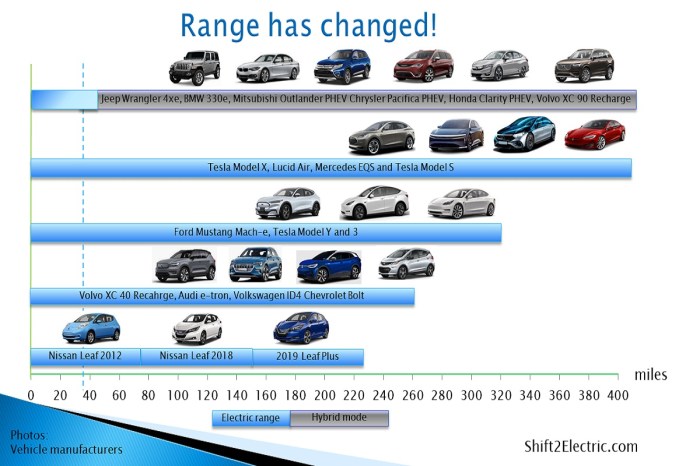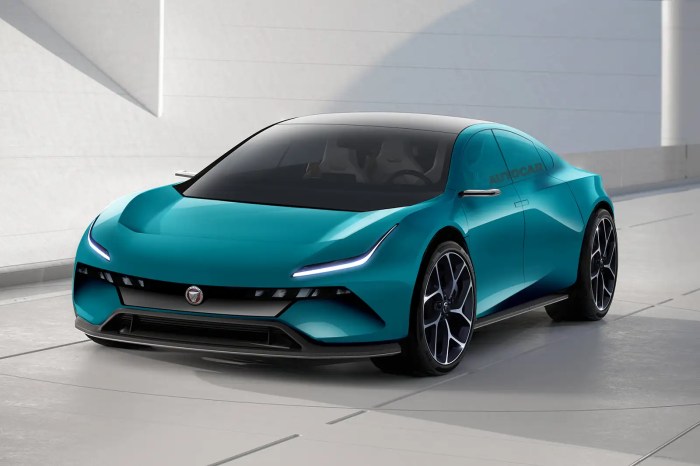EV battery life expectancy is a crucial topic in the electric vehicle industry, as it directly impacts the usability and longevity of electric vehicles. Understanding the typical lifespan of various battery types, coupled with the statistics on degradation over time, equips potential EV owners and enthusiasts with vital knowledge. With the right insights, users can make informed decisions about their investments in electric mobility.
The lifespan of an EV battery can vary significantly based on several factors, including the type of battery and its usage patterns. For instance, lithium-ion batteries, which dominate the market, typically last anywhere from 8 to 15 years, but this can fluctuate depending on charging habits and environmental conditions. By exploring these elements, we can grasp how to maximize battery longevity and performance.
Overview of EV Battery Life Expectancy
Battery life expectancy is a critical factor influencing the performance, cost, and overall viability of electric vehicles (EVs). Understanding how long an EV battery can last before it experiences significant degradation helps consumers and manufacturers alike make informed decisions. This concept encompasses not only the operational lifespan of the battery but also the conditions that can impact its longevity.
The average lifespan of EV batteries varies significantly depending on the battery type and usage conditions. Most electric vehicles today utilize lithium-ion batteries, which typically have a lifespan ranging between 8 to 15 years. This duration can be influenced by various factors such as charging habits, temperature, and the number of charge cycles. While manufacturers often claim that their batteries will retain a certain percentage of capacity over time, individual experiences can differ.
Battery Degradation Statistics
Battery degradation is an important aspect to consider when evaluating the longevity of electric vehicle batteries. Over time and with consistent use, batteries will gradually lose their capacity to hold a charge, leading to reduced driving range.
Key statistics related to battery degradation include:
- Research indicates that lithium-ion batteries typically experience a capacity loss of about 20% after 1,500 full charge cycles, which usually translates to approximately 10 years of typical usage.
- According to a study conducted by the Electric Power Research Institute (EPRI), EV batteries can lose around 2-3% of their capacity per year under optimal charging and temperature conditions.
- Data from real-world usage shows that some Nissan Leaf models have seen a capacity retention rate of around 80% after 8 years, highlighting the variation in battery endurance based on specific conditions.
“The longevity of an electric vehicle battery is heavily influenced by its charge cycles, temperature exposure, and overall maintenance.”
Furthermore, battery management systems in modern EVs play a crucial role in extending battery life by monitoring charging rates, temperatures, and overall health. These systems can help optimize the charging process, minimizing the risk of overcharging and deep discharging, both of which can accelerate degradation.
Real-world examples can illustrate the importance of these factors. For instance, Tesla’s battery technology has demonstrated significant resilience, with many users reporting minimal capacity loss even after several years of usage, showcasing the brand’s commitment to developing durable battery solutions. Conversely, in hotter climates, EVs may experience faster degradation rates, emphasizing the need for effective thermal management strategies.
Understanding these aspects of EV battery life expectancy enables users to maximize their vehicle’s performance and longevity, ultimately leading to more sustainable and economical ownership experiences.
Factors Affecting Battery Life
The longevity of electric vehicle (EV) batteries is influenced by a multitude of factors that can significantly impact their performance and lifespan. Understanding these factors is crucial for both manufacturers and consumers who want to maximize the utility and efficiency of their electric vehicles. This section delves into the primary elements that contribute to EV battery life expectancy, particularly focusing on charging habits and environmental conditions.
Key Influencers on Battery Longevity
Several factors contribute to the overall health and lifespan of EV batteries. These include temperature extremes, charging practices, depth of discharge, and maintenance. Each of these elements plays a role in determining how long a battery can sustain its performance before showing signs of degradation.
One critical aspect is how charging habits influence battery health. Regularly charging to 100% or allowing the battery to deplete to near-zero can negatively affect its longevity. Instead, maintaining the charge level between 20% and 80% is often recommended for optimal battery health.
Environmental Conditions Impacting Battery Performance
Various environmental factors can also significantly influence the performance of EV batteries. Understanding these conditions is essential for anyone looking to maintain their battery’s efficiency over time. The table below summarizes key environmental conditions and their impact on battery performance:
| Environmental Condition | Impact on Battery Performance |
|---|---|
| Extreme Heat | High temperatures can accelerate chemical reactions within the battery, leading to faster degradation. |
| Extreme Cold | Low temperatures can reduce battery efficiency and range, as well as impact charging speed. |
| Humidity | High humidity levels may lead to corrosion of battery components, potentially affecting overall performance. |
| Altitude | Higher altitudes may reduce air density, affecting cooling systems that are crucial for battery health. |
| Driving Conditions | Frequent stop-and-go driving can increase energy consumption, negatively affecting battery lifespan. |
In summary, a combination of user behavior and environmental conditions plays a pivotal role in determining the longevity of EV batteries. Awareness of these factors can lead to better practices and, ultimately, a more durable and efficient battery life.
Battery Management Systems (BMS)
Battery Management Systems (BMS) play a crucial role in enhancing the longevity and safety of electric vehicle (EV) batteries. These systems are designed to monitor and manage the various characteristics of battery packs, ensuring they operate under optimal conditions. By regulating charge and discharge cycles and safeguarding against potential faults, BMS technology not only extends battery life but also improves overall vehicle performance.
The primary function of a BMS is to monitor the health and performance of the battery, providing real-time data on various parameters that can affect battery longevity. The BMS continuously tracks voltage, current, temperature, and state of charge (SOC) of each individual cell within the battery pack. This information is vital for detecting imbalances that could lead to reduced performance or operational safety issues. By employing sophisticated algorithms, the BMS can also predict the remaining useful life of the battery, helping to inform users when maintenance or replacement may be necessary.
Advanced Features of BMS Enhancing Battery Longevity
Modern BMS technology comes equipped with a range of advanced features aimed at prolonging battery life and ensuring safe operation. These features are essential for maximizing the efficiency of the battery system, especially as EV technology continues to evolve. Below are some key functionalities provided by advanced BMS:
- Cell Balancing: This feature ensures that all cells within a battery pack charge and discharge evenly, preventing overcharging of individual cells that can lead to reduced overall capacity and life.
- Temperature Management: Effective thermal management is critical in maintaining battery health. BMS systems monitor cell temperatures and can activate cooling or heating mechanisms to keep the battery within optimal temperature ranges.
- State of Health (SOH) Monitoring: This function assesses the overall condition of the battery, measuring factors such as capacity fade and internal resistance to provide a comprehensive view of battery health over time.
- Adaptive Charging Algorithms: By adjusting the charging profile based on the battery’s current state and environmental conditions, BMS can optimize charging processes to reduce stress on the battery and extend its life.
- Fault Detection and Protection: BMS systems can identify potential faults such as short circuits or overvoltage conditions, providing immediate protection by disconnecting the battery or alerting the user to prevent damage.
These advanced features illustrate the importance of Battery Management Systems in maintaining battery health and longevity. By integrating these technologies, manufacturers are able to significantly enhance the performance and lifespan of EV batteries, ensuring a more reliable and efficient driving experience for users.
Maintenance and Care of EV Batteries

Maintaining and caring for electric vehicle (EV) batteries is crucial for maximizing their lifespan and ensuring optimal performance. Adopting the right practices not only extends battery life but also enhances the overall driving experience. Understanding the nuances of battery maintenance can lead to significant improvements in efficiency and reliability.
Proper care of EV batteries involves a combination of regular monitoring, timely interventions, and strategic usage. By being aware of key practices and potential pitfalls, EV owners can ensure their vehicles remain in peak condition. Below are essential tips that highlight best practices for battery maintenance, as well as common mistakes that can lead to diminished battery health.
Best Practices for Maintaining EV Batteries, EV battery life expectancy
To maintain the health and longevity of EV batteries, it’s important to implement specific care guidelines. These practices can prevent premature deterioration and enhance overall efficiency. Here are some crucial tips for optimizing battery health:
- Regular Charging: Charge the battery regularly to prevent deep discharges, which can damage the cells. Aim to keep the battery level between 20% and 80% for optimal health.
- Avoid Extreme Temperatures: Store and park the EV in shaded areas or garages to shield it from extreme heat or cold, which can negatively impact battery performance.
- Use a Reliable Charger: Utilize the manufacturer-recommended charging equipment to avoid any electrical discrepancies that could harm the battery.
- Periodic Battery Checks: Regularly monitor battery health indicators and performance metrics via the vehicle’s onboard systems to catch any issues early.
- Keep Software Updated: Ensure that the vehicle’s software is up to date, as manufacturers frequently release updates that optimize battery performance and management.
Additionally, avoiding common mistakes can significantly contribute to the longevity of the battery. Here are several pitfalls to sidestep:
- Neglecting Battery Management Systems: Ignoring the alerts and diagnostics provided by the battery management system can lead to overlooked issues that may escalate.
- Frequent Fast Charging: Over-reliance on fast charging stations can generate excess heat and stress the battery; use it sparingly.
- Letting Battery Deplete Completely: Allowing the battery to fully discharge can cause irreversible damage. Aim to recharge before reaching critically low levels.
- Ignoring Environmental Impact: Charging in extreme conditions, such as high humidity or freezing temperatures, can degrade battery life.
- Using Incompatible Accessories: Avoid using third-party chargers or components that are not certified for your EV model, which can lead to compatibility issues.
By adopting these best practices and steering clear of common mistakes, EV owners can substantially enhance their battery’s lifespan and overall vehicle efficacy.
Innovations in Battery Technology

The landscape of electric vehicle (EV) battery technology is rapidly evolving, driven by the pursuit of enhanced performance, longevity, and sustainability. Innovations in battery technology are critical as manufacturers aim to improve life expectancy and overall efficiency, ensuring that electric vehicles can meet the growing demands of consumers and regulations alike. This section delves into emerging technologies that promise to transform the future of EV batteries, compares traditional lithium-ion batteries with next-generation alternatives, and showcases case studies highlighting advancements in battery longevity.
Emerging Technologies in EV Batteries
Several cutting-edge technologies are on the horizon that could significantly improve the life expectancy of EV batteries. These innovations include solid-state batteries, lithium-sulfur batteries, and sodium-ion batteries, each offering distinct advantages over conventional lithium-ion systems.
- Solid-State Batteries: Solid-state technology replaces the liquid electrolyte found in lithium-ion batteries with a solid electrolyte. This change allows for greater energy density, improved safety, and potentially longer life spans. Companies like Toyota and QuantumScape are leading the charge, with prototypes showing promise for commercial viability.
- Lithium-Sulfur Batteries: Lithium-sulfur batteries have a higher theoretical energy density than lithium-ion batteries, which could lead to lighter and more efficient battery packs. Research by companies like Oxis Energy indicates that these batteries could achieve a life expectancy of over 1,000 cycles without significant degradation.
- Sodium-Ion Batteries: As an alternative to lithium, sodium-ion batteries are gaining traction due to the abundance and low cost of sodium. Companies such as Faradion are developing these batteries to address energy storage challenges while potentially offering longer life cycles and better performance in extreme temperatures.
Comparative Analysis of Battery Technologies
The performance and longevity of traditional lithium-ion batteries can be contrasted with next-generation alternatives to highlight the benefits of emerging technologies.
| Type | Energy Density (Wh/kg) | Cycle Life (Approx.) | Cost ($/kWh) |
|---|---|---|---|
| Lithium-Ion | 150-250 | 500-1,500 | 100-150 |
| Solid-State | 300-500 | 1,500-3,000 | 200-300 |
| Lithium-Sulfur | 500-600 | 1,000+ | 150-250 |
| Sodium-Ion | 100-150 | 2,000+ | 60-100 |
The comparative analysis reveals that while traditional lithium-ion batteries have served as the backbone of current EV technology, solid-state, lithium-sulfur, and sodium-ion batteries are set to offer higher energy densities, longer cycle lives, and potentially lower costs in the future.
Case Studies Demonstrating Battery Longevity Advancements
Several case studies illustrate the successful application of innovative battery technologies focused on improving longevity.
- QuantumScape: This company has developed a solid-state battery that reportedly maintains 80% of its capacity after 800 cycles, significantly outperforming traditional lithium-ion counterparts. Their technology promises to enhance the driving range of EVs while ensuring safety and longevity.
- Oxis Energy: Aiming to bring lithium-sulfur batteries to market, Oxis has shown prototypes that can deliver over 1,000 cycles with minimal degradation, indicating a transformative potential for energy storage in electric vehicles.
- Faradion: Their sodium-ion batteries are being tested in real-world applications, showing resilience and a cycle life that exceeds 2,000 charges, which could redefine cost-efficient battery technology for the EV industry.
These case studies demonstrate that as battery technologies evolve, the potential for extending life expectancy while improving performance is becoming increasingly viable, paving the way for a more sustainable future for electric vehicles.
Real-World Experiences and Case Studies

The practical application of electric vehicle (EV) technology often reveals the nuances of battery life that theoretical discussions may overlook. Understanding how batteries perform in real-world conditions is crucial for future buyers and manufacturers alike. The data gathered from user experiences and case studies provides invaluable insights into how battery life expectancy varies across different models and usage patterns.
Real-world usage of EV batteries illustrates a diverse range of performance outcomes influenced by driving habits, climate, and charging practices. For instance, some users report excellent battery longevity while others experience rapid degradation, showcasing the importance of contextual factors. Comparative analysis of different EV models reveals significant variations in battery life expectancy, with some dominating in efficiency while others lag behind.
Case Studies of Different EV Models
Analyzing user experiences across various EV models highlights the different factors that contribute to battery lifespan. Below are summarized insights from notable case studies:
| EV Model | Reported Battery Life (miles) | Owner Comments |
|---|---|---|
| Tesla Model 3 | 350-400 | Exceptional range, minimal degradation over 50,000 miles. |
| Nissan Leaf | 150-200 | Battery capacity reduced significantly after 3 years; frequent fast charging. |
| Chevrolet Bolt EV | 250-300 | Good overall performance but noticed some loss after 40,000 miles. |
| Hyundai Kona Electric | 250-300 | Stable performance, no major issues over 30,000 miles. |
| BMW i3 | 100-150 | Battery life underwhelming; struggles under cold weather conditions. |
The above table encapsulates user experiences across various EV models, showcasing both range and the context of battery performance. For example, Tesla Model 3 owners often report minimal battery degradation over extended mileage, while Nissan Leaf users frequently cite significant capacity loss, particularly when utilizing fast charging methods.
“Battery longevity is not solely determined by the technology employed but is heavily influenced by user behavior and environmental conditions.”
In essence, real-world experiences provide a clearer picture of how EV batteries function over time and under varying circumstances, offering essential insights for both current and prospective EV users.
Outcome Summary
In summary, understanding EV battery life expectancy involves diving deep into the factors that influence battery longevity, including charging habits, maintenance practices, and advancements in technology. As the electric vehicle market continues to evolve, staying informed about innovations in battery technology and real-world experiences can significantly impact consumer choices and overall satisfaction. As we advance, ensuring proper care and leveraging battery management systems will be key to enjoying a sustainable and efficient electric driving experience.